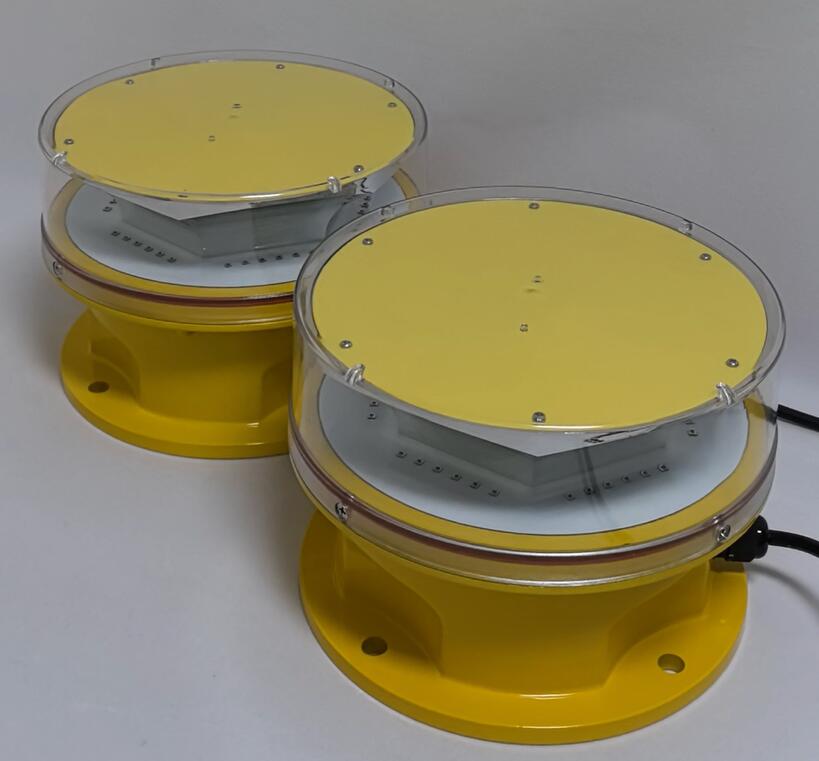Aviation Red Obstruction Lights Guiding the Skies Safely
In the vast expanse of the night sky, there are silent guardians that play a crucial role in ensuring the safety of aviation - aviation red obstruction lights. These unassuming yet essential beacons serve as a vital link between the ground and the skies, providing a clear warning to pilots and safeguarding the integrity of airspace.
Aviation red obstruction lights are designed to mark structures that pose a potential hazard to aircraft. From tall towers and skyscrapers to wind turbines and communication masts, these lights act as a visible indicator of obstacles that could otherwise be invisible in the darkness or poor visibility conditions. By emitting a distinct red glow, they alert pilots to the presence of these structures and help them navigate safely around them.

The importance of aviation red obstruction lights cannot be overstated. In an era where air travel is increasingly common and airspace is becoming more congested, these lights are essential for preventing collisions and ensuring the smooth flow of air traffic. A single unmarked obstruction could pose a significant risk to the safety of passengers and crew, as well as cause damage to aircraft and infrastructure.
One of the key features of aviation red obstruction lights is their visibility. These lights are designed to be highly visible from a distance, even in adverse weather conditions. They use advanced lighting technology, such as high-intensity LEDs, to emit a bright and consistent red glow that can be easily spotted by pilots. Additionally, many aviation red obstruction lights are equipped with flashing or strobe functions, further enhancing their visibility and attracting the attention of pilots.
| Aviation Red Obstruction Lights | DE4 | FR5 |
| FR45 | VG5 | 6T |
Another important aspect of aviation red obstruction lights is their reliability. These lights must be able to operate continuously and without failure, even in the harshest of environments. They are designed to withstand extreme temperatures, wind, rain, and other elements, ensuring that they remain functional at all times. Regular maintenance and testing are also essential to ensure the reliability of these lights, as any malfunction could have serious consequences.
The installation of aviation red obstruction lights is regulated by strict guidelines and standards. These guidelines ensure that the lights are installed in the correct locations and at the appropriate heights to provide maximum visibility to pilots. They also specify the intensity, color, and flashing patterns of the lights, ensuring that they meet the required safety standards. Compliance with these regulations is crucial for the safety of aviation and is enforced by regulatory authorities around the world.
In addition to their role in safeguarding airspace, aviation red obstruction lights also have a significant impact on the aesthetics of the night sky. The red glow of these lights can create a beautiful and mesmerizing sight, adding to the charm of urban landscapes and rural vistas alike. However, it is important to balance the aesthetic appeal with the safety requirements, ensuring that the lights are not too bright or distracting for pilots.
As technology continues to advance, the future of aviation red obstruction lights looks promising. New lighting technologies, such as solar-powered and energy-efficient LEDs, are being developed to improve the visibility and reliability of these lights while reducing energy consumption and environmental impact. Additionally, advancements in sensor technology and automated monitoring systems are enabling more efficient maintenance and management of aviation obstruction lights, ensuring their continued effectiveness.
In conclusion, aviation red obstruction lights are an essential component of aviation safety. They serve as a visible warning to pilots, helping them navigate safely around potential hazards and ensuring the smooth flow of air traffic. With their visibility, reliability, and regulatory compliance, these lights play a crucial role in protecting the lives of passengers and crew, as well as safeguarding the integrity of airspace. As we look to the future, continued innovation and improvement in aviation red obstruction lights will help ensure the safety of aviation for generations to come.
